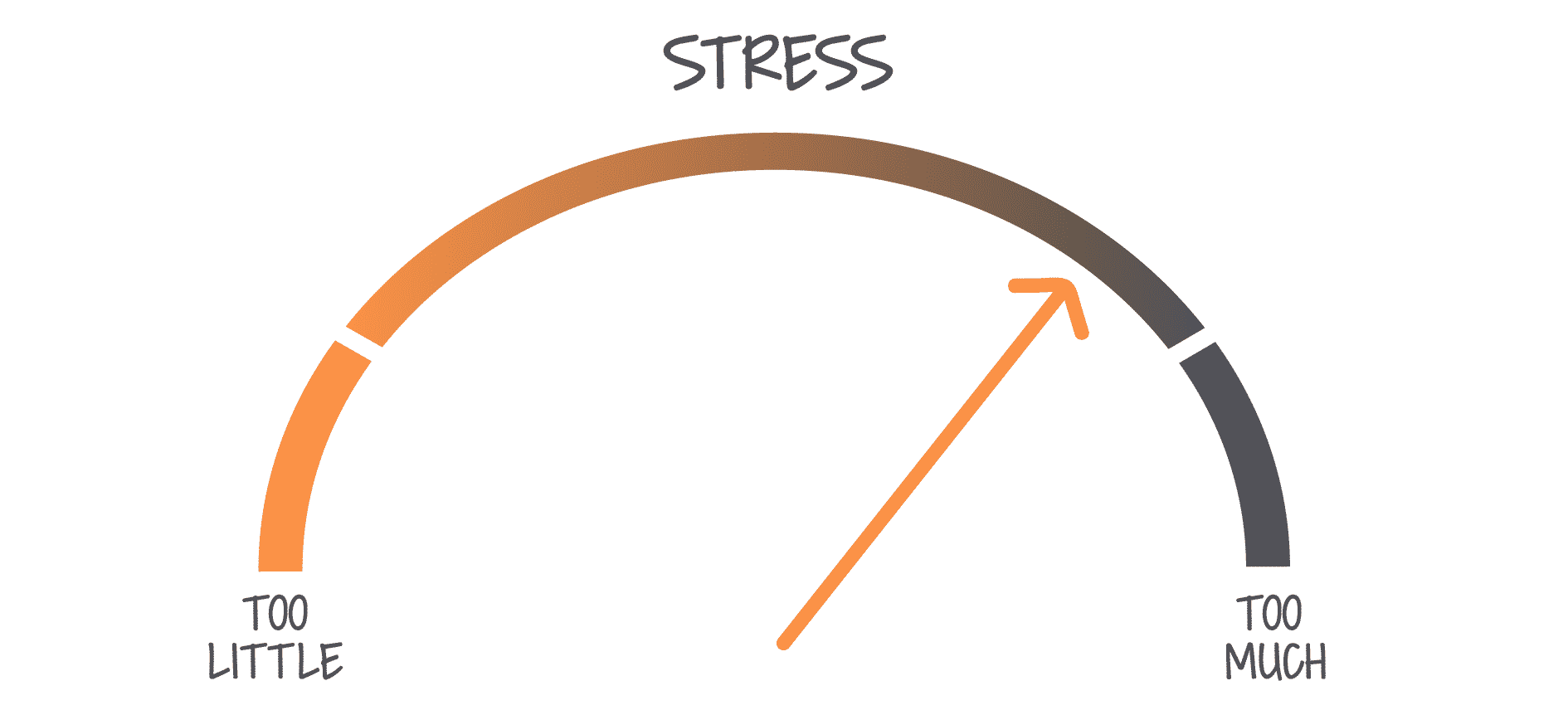Too much stress can be detrimental to our health. Yet, so can too little.
Most frequently, we complain about having too much stress, often work-related: too much to do, too few resources, too many unrealistic demands. Occasionally, stress is a more personal affair: handling tricky relationships or people who seem to be deliberately frustrating our goals.
But stress is simply a stimulus.
Consider it an event, the force that nudges our body’s equilibrium, its homeostasis, a little sideways. With an appropriate level of stress, at the right time and frequency, we are on guard and ready for action. And this applies to most scenarios, from running through the jungle to public speaking.
The Stress Response
You may not fully understand the science, but you certainly know something about physiological responses to stress. First, our cortisol rises and then epinephrine and norepinephrine are released. Next, our heart begins to beat faster as the body prepares for its pending challenge.
Too much stress though can cause a range of issues, such as fatigue, soreness, high blood pressure, and potential weakening of the immune system.
This applies to all types of stress. Whether the source is emotional, mental, chemical, or physical, there’s a spectrum that ranges from too little stress to too much.
This spectrum can be directly applied to our exercise choices. In our article, Five Ways to Avoid Training Injuries, we discussed the essential principle of micro-progression. The most appropriate workout we can choose right now is the one that nudges the needle just a small amount. If we never challenge our bodies, we won’t achieve results. But progress too quickly, and we run the risk of injury.
There is a sweet spot and it’s crucial to find it.
The Stress “Bank Account”
Whenever we experience stress, we make a withdrawal from our body’s stress “bank account.” The higher the stress we’re experiencing, the faster your account is depleted. During recovery though, in those periods of little to no stress, we make deposits into the account.
So, by balancing periods of stress with those of recovery, we’ll probably have a healthier bank balance. If not healthier, we’ll at least stay solvent.
Now apply this metaphor now to physical exercise. It’s a fact that our bodies respond well to intermittent periods of stress. Whether it’s the recurring forces we need for bone growth (or to curb osteoporosis) or the daily pressures our muscles endure, the body adapts and rebuilds in the recovery phase. However, if we thrash our bodies daily, we won’t recover and, inevitably, our bodies will break down. Our ability to function and perform will suffer. We’ll be bankrupt.
Allostatic Load
Despite our careers (banker, designer, fitness professional), the reality for many of us is that we rarely handle just a single source of stress. Real life has its place, and it’s one we cannot ignore. When we add in the pressures of work, home, relationships, money, and health, we start to see our accounts diminish even faster.
The sum of all these stressors in our lives is called the allostatic load.
When we exercise, it’s second nature to pay attention to the variables, the “loading parameters,” the number of sets and reps we do, as well as the recovery periods. So perhaps it’s time we gave as much thought to understand how our allostatic load is affecting us?
There’s no doubt that we need stress. Few of us would succeed as that happy, lone survivor on the beach (just ask Tom Hanks…).
Too little stress and we stagnate or regress. Too much stress and we can’t recover, performing poorly in our next exercise session and increasing our risk of injury.
So when we consider the allostatic load, we are creating the blueprint to make our exercise truly personal. Just because the program says four sets of eight reps, it doesn’t mean our bodies are ready. We must progress to this point in the right manner, nudging the needle just a little at a time. Just because we’ve progressed to four sets of eight reps, it doesn’t necessarily mean we should do them today.
Understand that all forms of stress (emotional, mental, chemical and/or physical) affect the body in varied ways. Plan ahead and, where possible, factor in rest periods (from all stressors).
When exercising, pull back when necessary and push forward when appropriate. This is the basis for creating a sustainable approach and managing a balanced account. And it’s one that gets results.
